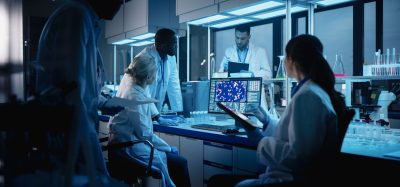New DNA nanostructures set to transform cancer treatment
Posted: 3 December 2024 | Drug Target Review | No comments yet
A University of Sydney study reveals how DNA origami can build programmable nanostructures, with promising applications in targeted drug delivery and nanorobotics.


A recent study led by researchers at the University of Sydney Nano Institute has unlocked the potential of DNA origami to create programmable, modular nanostructures with far-reaching implications for drug delivery and nanorobotics. Published in Science Robotics, the research demonstrates how DNA’s natural folding abilities can be harnessed to create advanced nanorobots, as well as responsive materials with applications in medicine, electronics, and more.
At the heart of the research is the concept of DNA origami, where strands of DNA are folded into intricate shapes to form nanoscale objects. These custom-designed nanostructures, also known as voxels, have the potential to transform various fields, from nanomedicine to synthetic biology. The research team, led by Dr Minh Tri Luu and Dr Shelley Wickham, used DNA to build more than 50 unique nanoscale objects, including a ‘dancing robot,’ a ‘nano-dinosaur,’ and a miniaturised map of Australia, all measuring just 150 nanometres across—approximately a thousand times smaller than a human hair.
“We’ve created a new class of nanomaterials with adjustable properties, enabling diverse applications – from adaptive materials that change optical properties in response to the environment to autonomous nanorobots designed to seek out and destroy cancer cells,” said Dr Luu, the study’s first author.
Velcro DNA enhances drug delivery
A key innovation in this study is the use of ‘Velcro DNA’ to control how the individual voxels assemble. The team incorporates additional DNA strands onto the exterior of the nanostructures. These strands act as programmable binding sites, ensuring that only complementary DNA sequences, such as matching Velcro pieces, can connect to allow for precise control over the structure’s formation.
Dr Luu elaborated: “These sites act like Velcro with different colours – designed so that only strands with matching ‘colours’ (in fact, complementary DNA sequences) can connect.”
This new approach to assembly is crucial for designing nanoscale robotic systems capable of performing specific tasks. It’s particularly promising for drug delivery, where these programmable nanobots could be designed to release medication only at the right time and place in the body. This could significantly improve the effectiveness of treatments like cancer therapies, while minimising harmful side effects.
A new era for nanotechnology
The ability to design and assemble programmable DNA nanostructures represents a major leap forward in nanotechnology. According to Dr Wickham, “this research not only highlights the capabilities of DNA nanostructures but also emphasises the importance of interdisciplinary collaboration in advancing science. We are excited to see how our findings can be applied to real-world challenges in health, materials science and energy.”
As the technology matures, these adaptive nanomachines could operate in increasingly complex environments, such as inside the human body, offering solutions to some of the most pressing challenges in drug delivery, healthcare, and beyond.
This study was published in Science Robotics.
Related topics
Drug Delivery, Immunotherapy, Molecular Biology, Nanomedicine
Related conditions
Cancer
Related organisations
University of Sydney Nano Institute
Related people
Dr. Minh Tri Luu, Dr. Shelley Wickham








